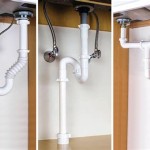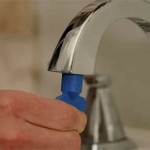Replacing Taps in a Bathroom Sink: A Comprehensive Guide
Replacing taps in a bathroom sink is a common DIY project that can significantly enhance the aesthetic and functionality of a bathroom. It involves removing the old taps and installing new ones. This process requires some basic plumbing skills and tools. While it may seem daunting, with the right instructions and preparation, it can be accomplished successfully.
Tools and Materials Needed
Before embarking on the replacement process, it's essential to gather the necessary tools and materials. This includes a wrench, adjustable pliers, a screwdriver, Teflon tape, a pipe wrench, a basin wrench, and a new set of bathroom taps. Depending on the specific taps being installed, additional tools may be required.
Step-by-Step Guide to Replacing Bathroom Sink Taps
The process of replacing bathroom sink taps involves several distinct steps. It's essential to follow these steps carefully to ensure a successful and leak-free installation.
- Turn off the water supply: Locate the shut-off valves for the hot and cold water supply lines to the sink. Turn these valves clockwise until they are completely closed.
- Drain the water: Open the taps to allow any remaining water in the pipes to drain.
- Remove the old taps: Use a wrench to loosen the nuts that secure the old taps to the sink. If the nuts are stubborn, use a basin wrench for easier access. Once loosened, unscrew the taps and remove them from the sink.
- Remove the old supply lines: Disconnect the supply lines from the old taps. For flexible supply lines, use a wrench to loosen the compression nuts. For rigid supply lines, use a pipe wrench to loosen the fittings.
- Clean the sink and pipes: Use a cleaning cloth to wipe away any dirt or debris from the sink and the openings where the supply lines connect. This will ensure a clean and secure connection for the new taps.
- Prepare the new taps: If necessary, attach the new supply lines to the taps. Secure the fittings with compression nuts or pipe wrenches, depending on the type of supply line.
- Install the new taps: Insert the new taps into the sink openings. Connect the supply lines to the taps. Use a wrench to tighten the nuts that secure the taps to the sink. Ensure the taps are securely fastened without overtightening, which can damage the sink.
- Turn on the water supply: Slowly open the shut-off valves for the hot and cold water supply lines. Check for leaks around the connections. If there are any leaks, tighten the connections further.
- Test the taps: Turn on the hot and cold taps individually to ensure they are functioning properly and no leaks are present.
Tips for Success
To maximize the success of replacing bathroom sink taps, consider these additional tips:
- Choose high-quality taps: Invest in durable and reliable taps to ensure longevity and minimize future issues.
- Check the tap compatibility: Ensure that the new taps are compatible with the sink's existing plumbing system. Pay attention to the tap connections and the diameter of the openings in the sink.
- Use Teflon tape: Wrapping Teflon tape around the threads of the supply lines before connecting them to the taps helps create a leak-proof seal.
- Consult a professional: If you are unsure about any aspect of the installation process or have concerns about your plumbing system, consult a qualified plumber.

How To Easily Replace Basin Taps Step By

Diy How To Replace A Bathroom Sink Faucet Remove Install

How To Replace Bathroom Taps Big
How To Change Bathroom Taps Everything You Need Know

How To Install Basin Taps Replacing A Bathroom Sink Tap

How To Replace A Bathroom Faucet Tinged Blue

Diy How To Replace A Bathroom Sink Faucet Remove Install

How To Install Basin Taps Replacing A Bathroom Sink Tap

Bathroom Faucet Replacement For Beginners Making Maanita

How To Replace A Bathroom Faucet Home Repair Tutor
Related Posts







